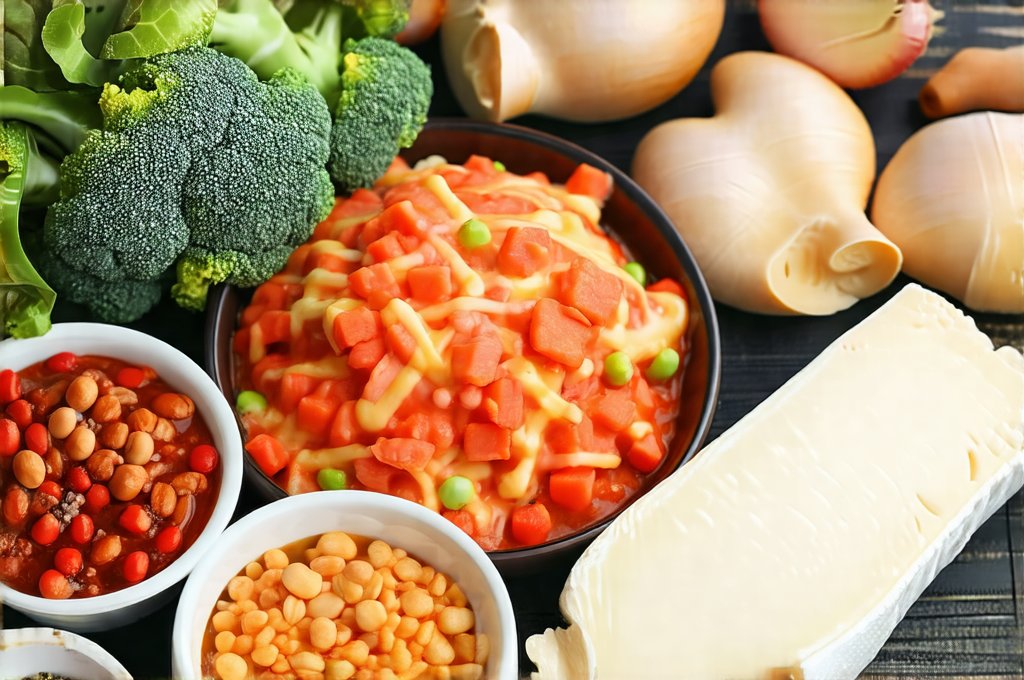Lactose intolerance is surprisingly common, impacting millions worldwide with varying degrees of discomfort after consuming dairy products. It’s not an allergy – it’s a digestive issue arising from insufficient levels of lactase, the enzyme needed to break down lactose, the sugar found in milk and other dairy items. This undigested lactose then ferments in the colon, leading to symptoms like bloating, gas, diarrhea, and abdominal cramps. While some individuals can tolerate small amounts of dairy, others experience significant distress even with minimal consumption. Effectively managing lactose intolerance isn’t about complete deprivation; it’s about making informed choices and adapting dietary habits to minimize discomfort and maintain a balanced nutritional intake.
Many people mistakenly believe navigating life with lactose intolerance requires drastically limiting essential nutrients found in dairy – calcium, vitamin D, protein, and potassium. However, a well-planned dairy-free digestive meal plan can easily provide these nutrients from alternative sources. This isn’t about restriction as much as it is about substitution and mindful eating. Focusing on gut health, incorporating probiotics, and understanding trigger foods are vital components of successfully managing lactose intolerance while enjoying delicious and satisfying meals. The following plan aims to provide a framework for building a sustainable and enjoyable dairy-free lifestyle that prioritizes digestive comfort and overall well-being.
Understanding Lactose Intolerance & Dietary Strategies
Lactose intolerance manifests differently in individuals, ranging from mild discomfort to severe symptoms. Identifying your personal tolerance level is the first step towards managing it effectively. Some people can tolerate hard cheeses or yogurt (due to lower lactose content) while others react even to trace amounts of lactose found in baked goods. Understanding these individual sensitivities allows for a more tailored dietary approach. – Elimination Diet: A temporary removal of all dairy products followed by gradual reintroduction to pinpoint specific triggers and tolerance levels. – Lactose-Free Alternatives: Utilizing readily available lactose-free milk, yogurt, cheese, and ice cream options that still offer the nutritional benefits without the digestive upset. – Enzyme Supplements: Taking lactase enzyme supplements before consuming dairy can aid digestion for those with mild intolerance, allowing them to enjoy some dairy products in moderation. Consider digestive enzymes if you still struggle.
Beyond simply avoiding dairy, it’s important to consider overall gut health. A healthy gut microbiome plays a crucial role in digesting food and maintaining digestive regularity. Incorporating probiotic-rich foods like sauerkraut, kimchi, or kombucha can help support a balanced gut flora. Prebiotic foods – such as bananas, onions, garlic, and asparagus – feed the beneficial bacteria in your gut, further enhancing digestive function. Fiber intake is also essential for promoting regular bowel movements and preventing constipation, which can exacerbate lactose intolerance symptoms. Focusing on these elements alongside dairy avoidance creates a holistic approach to digestive wellness. If you are experiencing chronic fatigue alongside digestive issues, explore options with meal planning.
A 7-Day Dairy-Free Digestive Meal Plan
This meal plan focuses on easily digestible foods and provides balanced nutrition while completely excluding dairy products. It incorporates options for breakfast, lunch, dinner, and snacks, with suggestions for substitutions based on individual preferences. Remember to adjust portion sizes according to your caloric needs and activity level. This is a starting point; feel free to customize it to fit your lifestyle!
Day 1: Breakfast – Oatmeal made with almond milk, topped with berries and chia seeds. Lunch – Large salad with grilled chicken or tofu, mixed greens, avocado, and a lemon-tahini dressing. Dinner – Baked salmon with roasted sweet potatoes and steamed broccoli. Snacks – Apple slices with almond butter; handful of almonds.
Day 2: Breakfast – Smoothie made with banana, spinach, plant-based protein powder, and coconut water. Lunch – Leftover baked salmon and vegetables. Dinner – Chicken stir-fry with brown rice and a variety of colorful vegetables. Snacks – Rice cakes with avocado; small orange.
Day 3: Breakfast – Scrambled eggs (cooked in olive oil) with spinach and whole-wheat toast. Lunch – Lentil soup with a side salad. Dinner – Turkey meatballs with zucchini noodles and marinara sauce. Snacks – Carrot sticks with hummus; pear.
The plan continues for the remaining days, incorporating similar principles of lean protein, complex carbohydrates, healthy fats, and plenty of fruits and vegetables. Throughout the week, prioritize hydration by drinking plenty of water. Consider using spices like ginger and peppermint to aid digestion. Remember that this is just a sample; there are countless dairy-free recipes available online and in cookbooks. Experiment with different flavors and ingredients to find what you enjoy most. For families looking to incorporate these changes together, consider building a family meal plan.
Boosting Digestion & Reducing Bloating
Bloating and gas are common complaints among those with lactose intolerance, even when diligently avoiding dairy. Several strategies can help minimize these symptoms beyond dietary modifications. – Mindful Eating: Eating slowly and chewing food thoroughly aids digestion and reduces the amount of air swallowed during meals. – Hydration: Drinking plenty of water helps keep things moving through your digestive system. – Regular Exercise: Physical activity promotes gut motility and reduces bloating.
Probiotics are beneficial bacteria that live in your gut and play a vital role in digestion. Consider incorporating probiotic-rich foods into your diet or taking a probiotic supplement (consult with a healthcare professional before starting any new supplements). Prebiotics, as mentioned earlier, feed these beneficial bacteria, creating a synergistic effect for optimal gut health. Additionally, identifying and avoiding other potential food sensitivities – such as gluten, soy, or certain vegetables – can further reduce digestive discomfort. Keeping a food diary to track symptoms and identify triggers is an invaluable tool. You might find one-pot meals easier on your system, too.
Navigating Dining Out & Social Situations
Dining out or attending social events can present challenges for those with lactose intolerance. Being prepared and proactive is key to enjoying these experiences without compromising your digestive health. – Restaurant Research: Check restaurant menus online beforehand to see if they offer dairy-free options or are willing to accommodate dietary requests. – Communicate Clearly: Inform your server about your lactose intolerance and ask how dishes can be modified to exclude dairy. Don’t hesitate to ask questions about ingredients and preparation methods. – BYO Alternatives: If you’re attending a party, consider bringing your own dairy-free snacks or drinks to ensure you have options.
Don’t feel obligated to explain your dietary restrictions to everyone, but be comfortable communicating your needs when necessary. Many restaurants are becoming more accommodating to dietary requests, and it’s perfectly acceptable to ask for substitutions or modifications. Remember that your health is a priority. Planning ahead and being prepared will allow you to enjoy social occasions without anxiety or digestive upset. For office workers who experience post-lunch sensitivities, look into best meal types.
Long-Term Management & Nutrient Considerations
Maintaining a dairy-free lifestyle long-term requires consistent effort but can be incredibly rewarding. Focusing on nutrient replacement is crucial, as dairy provides significant amounts of calcium, vitamin D, and protein. Excellent sources of calcium include leafy green vegetables (kale, spinach), fortified plant-based milks, almonds, and tofu. Vitamin D can be obtained through sunlight exposure, fatty fish, egg yolks, and fortified foods. For protein, incorporate lean meats, poultry, fish, beans, lentils, tofu, and quinoa into your diet.
Regular check-ups with a healthcare professional are important to monitor overall health and ensure adequate nutrient intake. They can also provide personalized guidance on managing lactose intolerance and addressing any concerns you may have. Remember that lactose intolerance is manageable with the right knowledge and strategies. It’s about embracing a lifestyle that prioritizes digestive comfort, nutritional balance, and overall well-being – allowing you to enjoy delicious food without fear of discomfort. If you are experiencing daily nausea or discomfort, consider building a gentle meal plan.


















